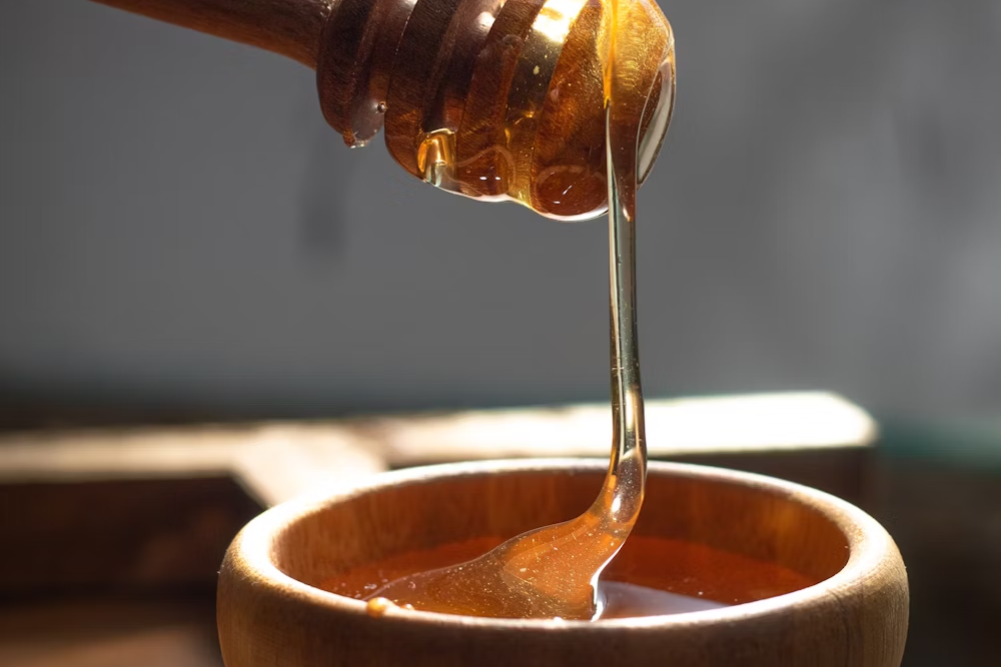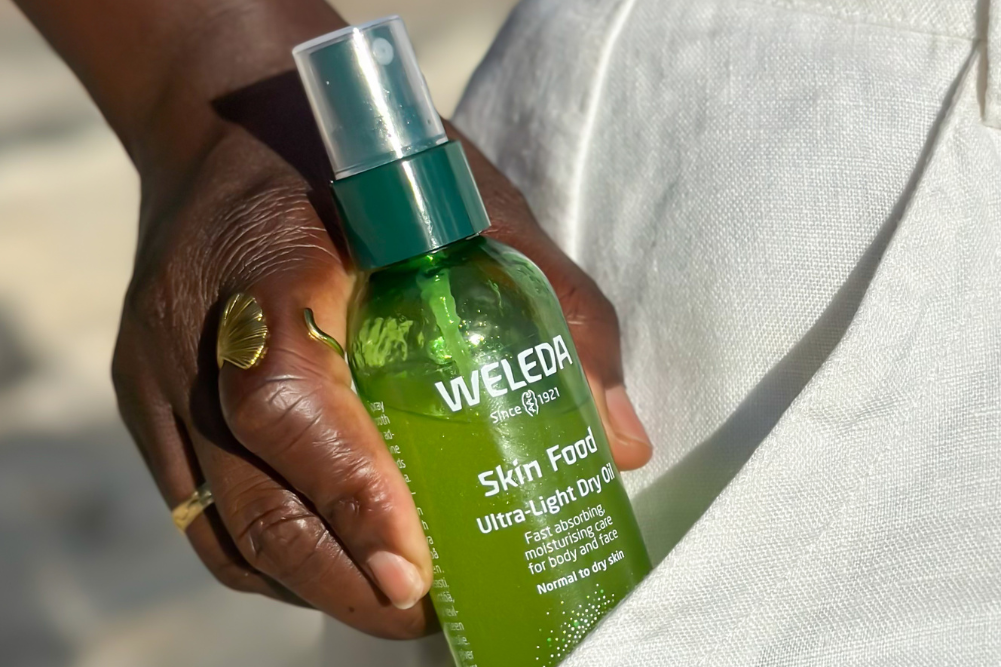Everything you need to know about rose essential oil
Will you accept this rose? Imagine its perfect petals unfurling in your palm. Stroke its velvety texture. Inhale its sweet essence. Do you feel calmer, cooler? Rose infuses more peace and pleasure into our experiences. Everything comes up roses when we succumb to its seductive scent.
The rose has a reputation for enhancing romance, healing hearts and stirring passion. Tales that tell of Aphrodite’s blood turning rose red and the original rose springing from Mohammed’s sweat increase this bloom’s mystique. Legendary Cleopatra’s bed of roses lured lovers, harem ladies bathed in petals of a thousand roses and the Taj Mahal’s muse, Mumtaz, is said to have captivated her husband with rose essence.
The middle of many mandalas is an expanding rose, which signifies the soul flourishing on steps to samadhi (bliss).
The East has adored the rose as an aphrodisiac and cooling tonic for the whole body. Traditional herbalist Hippocrates prescribed it for female reproductive issues, Dioscorides for headaches, eye and ear issues and Culpepper for the heart and digestive organs.
Today, rose is popular with perfumers as it blends beautifully with other essences, with each species singing distinct nasal notes. Rose’s honeyed sweetness can soften a woody composition and make citrus scents a flirty fragrance. It even has a unisex appeal as, according to Mandy Aftel, a custom perfumer and historian, “Roman men loved wearing rose, and the men I work with today still love it.” Rose mixed with more masculine scents such as cedarwood, nutmeg and vetiver has a more robust, heady aroma.
Spiritual symbol
The rose holds sacred significance in every faith. Its perfect petals whirling open reflect the heart and soul blossoming. Rose’s sweet scent is the aroma of unconditional divine love. To see or receive a rose is a holy sign that higher forces such as angels are supporting you. Supportive spirits use roses to send messages as they vibrate at the highest electrical frequency of any flower: 320 megahertz, as opposed to lavender, which vibrates at a rate of 118 megahertz.
Traditionally, rose has been used as an infusion to bathe inflamed eyes, rosewater as an astringent skin tonic, rose petal jam to cool the blood and rose essential oil to uplift the spirits.
Religions use the rose to represent the purity of the Garden of Eden, the Virgin Mary, saints and divine love. The red rose is symbolic of the sacrificial blood of Jesus. The cosmic rose in Hinduism known as Tripura Sundari symbolises the goddess’s strength and wisdom. The middle of many mandalas is an expanding rose, which signifies the soul flourishing on steps to samadhi (bliss).
In tarot, the rose is queen of our soul garden. Rose garlands are often offered to deities and gurus to signify a surrendered heart. Rosary prayer beads meaning “crown of roses” connect you to divine blessings. The original rosary was of rose images, of which the golden rose was the highest honour conferred by the Pope. Rose scent suddenly effusing in the atmosphere is a sign of sanctity in Islam and Catholicism. Buddhist monks and Eastern royalty would bathe in rosewater to purify themselves for rituals.
As it’s emblematic of the Virgin Mary, there are many miracles involving roses. The most famous was the supernatural Our Lady of Guadalup event in 1531, when believers say Mary arranged roses in the inside of Juan Diego’s poncho in the form of Mary and an angel, leading many to convert to Christianity.
Rose ritual
“The rose is a flower of love. Pink roses are for love hopeful and expectant. White roses are for love dead or forsaken. But the red roses, ah, the red roses are for love triumphant.” ~ Unknown
According to Ayurveda the rose is affiliated with love because it balances sadhaka pitta, the element that governs the heart and its associated emotions. It also appeases anger, which is the antithesis of affection. To connect with your heart, try this traditional transformational heart meditation:
- Sit with a beautiful rose flower in your palm. Close your eyes and visualise it as a rosebud in your heart.
- Smile to your heart and inhale love into the bud. See it opening petal by petal as you exhale love. The rose expands to encompass your whole chest.
- With each breath, the blossom grows to become your body. Its perfumed petals permeate your being. You’re filled with its ecstatic essence.
- Deeply inhale the real rose’s scent. Exhaling, chant Aham premam (“I am love”). Imagine the rose air enveloping loved ones. You are connected by its blissful bouquet.
The name of the rose
Bulgaria produces most of the world’s rose oil. Every year, thousands enjoy the Rose Festival at Kazanlak in Bulgaria where this “liquid gold” is celebrated with harvesting, folk dancing, art exhibitions, gourmet cooking, wine tasting and the crowning of the Queen of the Roses.
Precious rose oil is one of the most expensive aromas with it taking over 12,000 rose flowers to produce 5mL of oil, around 60 roses to draw just one drop. There are more than 10,000 rose species, so it can be confusing to choose one. Just six roses, however, are used for their fragrance and therapeutic benefits. These are:
- Rosa centifolia, the cabbage rose, more commonly grown in Morocco, France and Egypt. This exudes a light, clean and sweet scent.
- Rosa damascena, the damask rose, which is widely grown in Syria, Bulgaria, Turkey, Russia, Pakistan, India, Uzbekistan, Iran and China. It has a deep, potent and earthy scent.
- Rosa gallica, the gallic rose produced in France, Germany and the US.
- Rosa ×alba, the white rose less commonly produced in Bulgaria.
- Rosa bifera, cultivated in Arabia, India, Iran and Morocco.
- Rosa multiflora, grown in China, Korea and Thailand.
True, unadulterated and pure rose essential oil (Rosa damascena) is very difficult to source. In almost all cases, you will find a highly diluted oil, usually no more than 5 per cent rose oil in a base of oil (or even alcohol) or a rose absolute. There are also three types of rose oil extraction that result in varying products and prices. These are:
- Hydro distillation. This produces Rose Otto oil, usually from the Rosa damascena It is the priciest, purest and palest form, often used as perfume. It crystallises when cold due to plant waxes. Rose Otto is the preferred oil for topical aromatherapy applications because Rose Absolute may contain trace amounts of residual solvent. Rosewater or hydrosol is a by-product of this process.
- Solvent extraction. This produces Rose Absolute by extracting the essence with hexane and ethanol alcohol. It’s thicker, cheaper, darker with a more pungent aroma. It’s favoured by fragrance formulators for its stronger scent.
- Supercritical carbon dioxide extraction. This process also produces an absolute or CO2essence, which resembles the original flower scent most accurately.
Rosehip seed oil (from Rose canina, dog rose) is produced from the small fruits that flourish behind the rose flower. It’s valued in skincare to lighten pigmentation, promote collagen and smooth fine lines through its vitamin C and retinol content.
Remarkable rose
Rose is not only beautiful to behold and inhale, it also possesses powerful mind-body effects. Smell is the only sense to immediately impact on the brain and is 10,000 times stronger than other senses. An inhaled essence travels via olfactory nerves directly to the brain’s limbic system, which governs memories, emotions, libido, hunger, pleasure, instincts, immunity and hormones.
The most commonly used Rosa damascenasmells divine and has a plethora of properties. It contains repellent citronellol, antimicrobial citral, digestive carvone, aromatic citronellyl acetate, antioxidant eugenol, moisturising farnesol, anaesthetic methyl eugenol, sweet-smelling antibiotic nerol and phenylacetaldehyde.
Rose oil’s health benefits can be attributed to its actions as an antidepressant, anti-inflammatory, antiseptic, antispasmodic, antiviral, aphrodisiac, astringent, bactericidal, cholagogue (bile stimulating), cicatrisant (skin healing), emmenagogue (menstrual flow stimulating), haemostatic (stopping bleeding), hepatic, hormone balancer, laxative, nervine (nerve calming), stomachic purifyer and uterine tonic.
Precious rose oil is one of the most expensive aromas with it taking over 12,000 rose flowers to produce 5mL of oil, around 60 roses to draw just one drop.
Traditionally, rose has been used as an infusion to bathe inflamed eyes, rosewater as an astringent skin tonic, rose petal jam to cool the blood and rose essential oil to uplift the spirits. Modern aromatherapists employ rose essential oil for acne rosacea, anxiety, bleeding, constipation, cramps, depression, dry skin, eczema, fever, frigidity, grief, heartache, hormone imbalances, infections, low libido, menopausal flushes, seizure prevention, stress and wrinkles.
According to aromatherapist and author Jeanne Rose, “Rose oil is used to soothe the nerves, calm the nervous system and act as a tonic to relieve symptoms of depression.” Scientific studies have validated that rose’s sublime essence is effective for stress as it induced calm and decreased breathing rate in a study of 40 people, published in Natural Product Communicationsin 2009.
Another study showed that a weekly massage with rose, rose geranium, lavender and jasmine oils reduced menopausal symptoms including hot flushes. Yet another study, published in the Journal of Alternative and Complementary Medicinein 2006 and involving 67 women, revealed that an aromatherapy blend of one drop rose essential oil, two drops lavender essential oil and one drop clary sage essential oil in 5mL of almond oil alleviated cramps when massaged on the abdomen.
A blend of rose and lavender oil has been shown to reduce post-partum depression and anxiety. In further research, rose’s antibacterial action completely eliminated the propionibacterium responsible for acne.
Rose recipes
Turn life’s thorns into roses by adding rose essential oil to your everyday routines. I like to smear a spot of rose essential oil on my heart chakra over my clothes to emanate and attract loving energy. Here are some further ideas for adding rose into your days:
- Rose makes a moisturising, cooling addition to your hair and skin products.
- Spritz rosewater on your bedding for a rapturous rest.
- Use pure alcohol-free rosewater as an eyewash for tired eyes.
- Mix it with vanilla essence and coconut oil for a lovely lube.
- Combine with a carrier oil such as jojoba, sweet almond or avocado and add to baths or use as massage oil.
- Added to a diffuser blend, rose oil creates calm, sensual surrounds.
When blending scent, rose mixes marvellously with the base notes of balsam of Peru, cedarwood, vetiver and sandalwood. It also combines well with other florals like bergamot, chamomile, geranium, jasmine, lavender, melissa, neroli and patchouli for a sweet, romantic fragrance. For an uplifting mix try cardamom, clove, lemon or mandarin. To treat hormonal issues, rose works well with clary sage, jasmine, rose geranium and saffron in a blend of evening primrose oil.
Caveats
Don’t use essential oils internally, undiluted, when pregnant or in excessive doses. Try a small skin patch test to check for sensitivity before applying all over. Avoid eyes, ears and nose.








